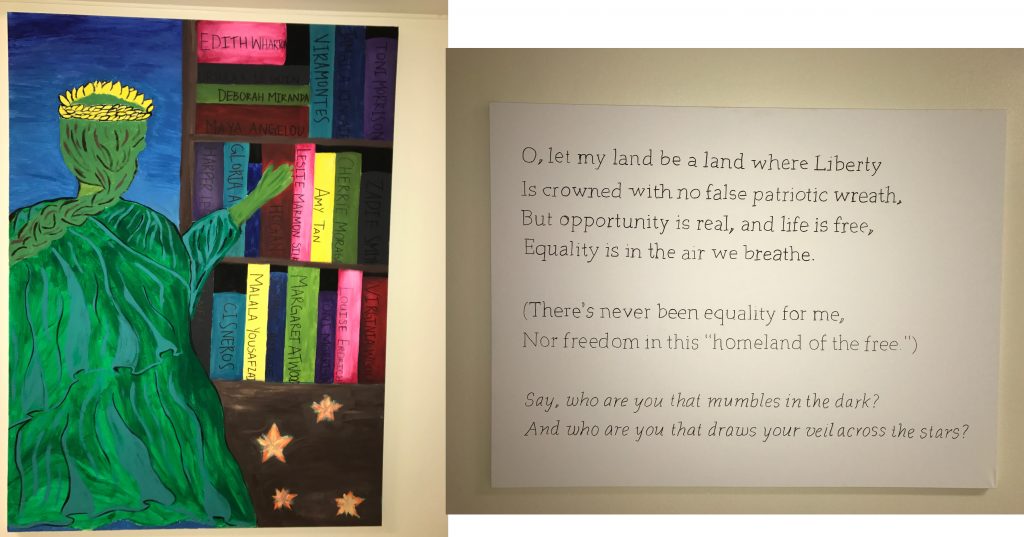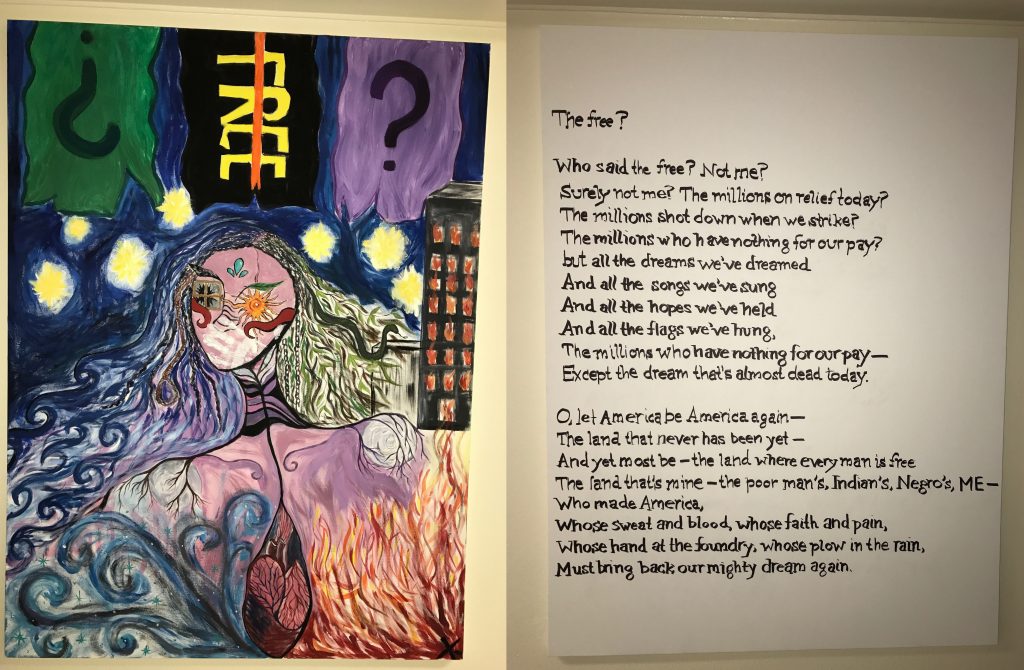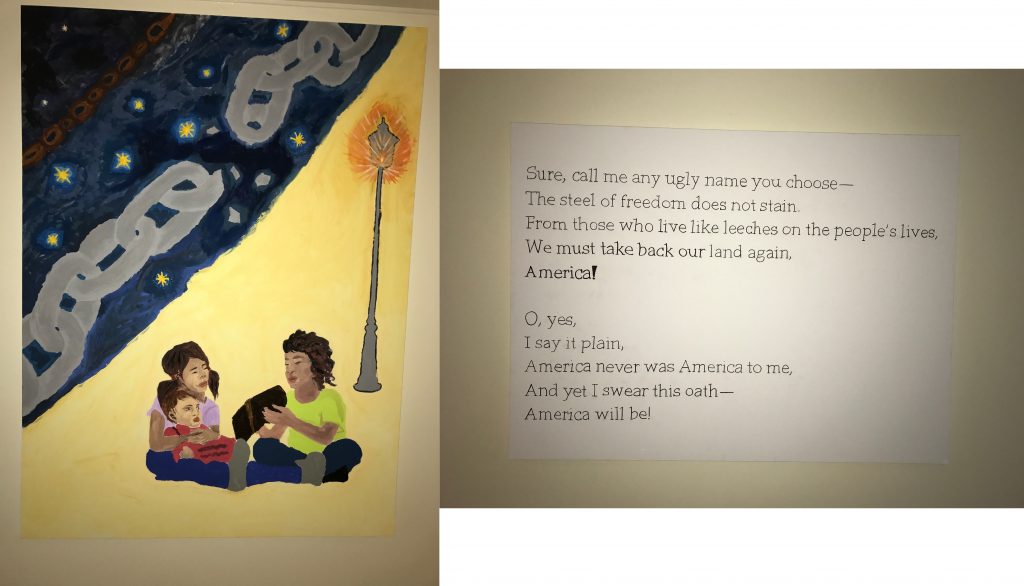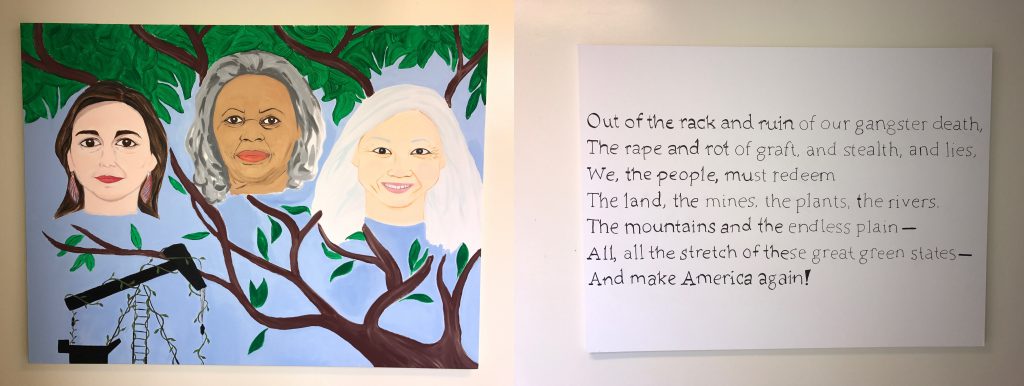In spring quarter 2017, undergraduate students, graduates, and faculty members of the UCSB English Department embarked on a project to paint a series of panels that interpret and illustrate Langston Hughes’ iconic poem “Let America Be America Again.” This page documents our journey! You can see the completed panels at the bottom of this page, and you can also click here to go directly to the panels gallery. Plus, read the UC Santa Barbara Current’s article on the art project here!
Timelapse video of painting day, thanks Jeremy Douglass and Tyler Shoemaker of the English Department!
In the wake of the 2017 election, UCSB’s English Department issued a statement reaffirming “[o]ur core values of fostering dialogue, civic engagement, and social justice” and asserting our “commit[ment] to protecting our students from a culture of fear, loathing and terror.” Now that vicious campaign rhetoric is turning into “policy that,” as the department feared, “violates the rights of some, threatens the lives of others, and compromises our shared environment,” we must do more than make a statement. In addition to continuing to advocate for our students, we came together as a department to paint a series of murals that mark South Hall as an inclusive, welcoming space for our students, especially those who are targeted by these new policies. Using art to put Hughes’ words on our walls brings alive the language of one of America’s greatest poets to remind our community that, as our department claims, “[h]ow we use words matters— as language, as literature, as culture. How we use words makes our world.” Bringing together undergraduates, graduate students, and professors, the project built community and created lasting art to help move our shared space towards the world we want to live in.
Langston Hughes was the ideal poet for this project not only because of his unquestioned status in the American canon, but also because his poetry continues to articulate the anxieties and aspirations of the people of the United States. Written in 1935, Hughes’ poem is not only an aesthetic innovation, but also a still relevant critique and plea for this community that we share. “Let America Be America Again” both reaches backward to Walt Whitman’s “Song of Myself” and forward to Native poet Allison Hedge Coke’s “America, I Sing You Back.” We hope that the success of this project paves the way for future murals that depict these and other poems!
At two planning meetings, undergraduates and graduates met up to read the poem, discuss its resonance, and share ideas for the art project. This was a great opportunity to engage with poetry outside of the classroom, and participants took turns reading stanzas and close reading the words of Langston Hughes. At these meetings, we decided to create a 14 panel series, with 7 panels depicting the words of the poem and 6 complementary panels that would illustrate the selected stanzas.
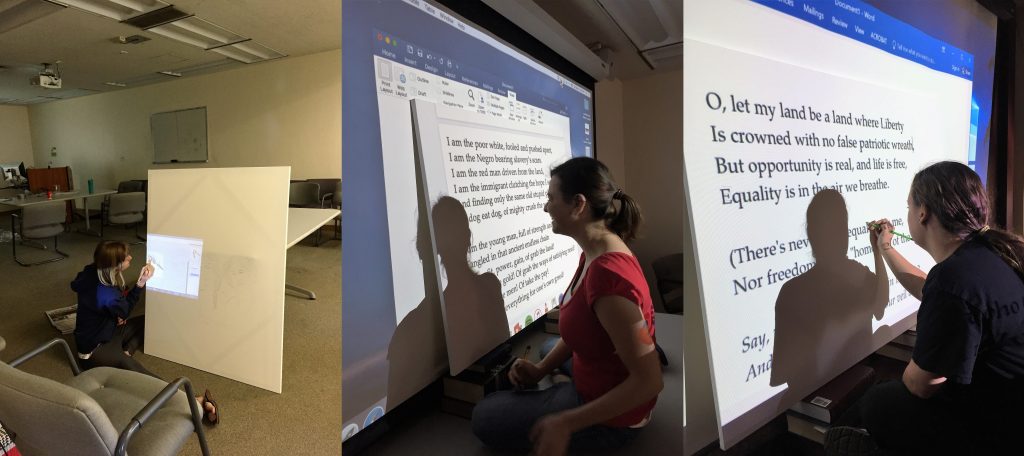 Part of the planning process involved choices about composition, layout, and methodology. As you can see above, the panels with the words from the poem were delicately traced by an all-star team of dedicated wordsmiths. We used projectors to trace words and some of the images, and you can see how we gave new meaning to the term “close reading”!
Part of the planning process involved choices about composition, layout, and methodology. As you can see above, the panels with the words from the poem were delicately traced by an all-star team of dedicated wordsmiths. We used projectors to trace words and some of the images, and you can see how we gave new meaning to the term “close reading”!
Undergraduates from various majors, graduates from many different years, faculty (and faculty “Jr!”), friends of the department, and even a very good dog came to participate in the two painting days.
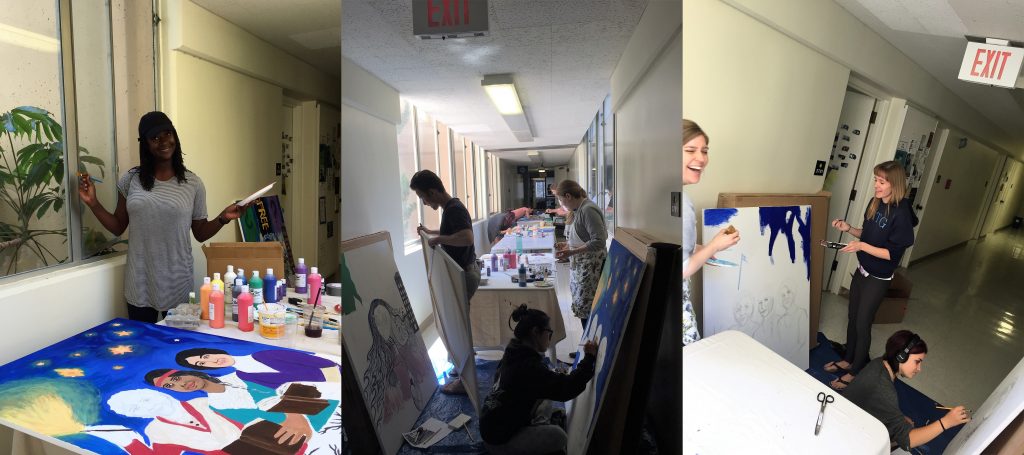 It took two Saturdays of sketching, drawing, tracing, and painting to realize the completed mural project. We were able to use the natural light of South Hall and the ample hallway space to spread out yet stay cozy.
It took two Saturdays of sketching, drawing, tracing, and painting to realize the completed mural project. We were able to use the natural light of South Hall and the ample hallway space to spread out yet stay cozy.
 We even branched out a little bit into the Collaborative Student Commons! As each panel of the mural came closer to completion, our work became more and more detail oriented, from shading the panels that featured nighttime scenes to adding more depth to Lady Liberty’s cloak.
We even branched out a little bit into the Collaborative Student Commons! As each panel of the mural came closer to completion, our work became more and more detail oriented, from shading the panels that featured nighttime scenes to adding more depth to Lady Liberty’s cloak.
Proud faces at the project’s completion!
We are very grateful for the support of Department Chair Enda Duffy, the American Cultures and Global Contexts Center, COMMA, Hemispheric South/s, Literature and the Mind, and Transcriptions. Thank you to everyone who contributed their time, efforts, and imagination to this project!
If you can’t make it out to South Hall, you can see the completed panels directly below.








